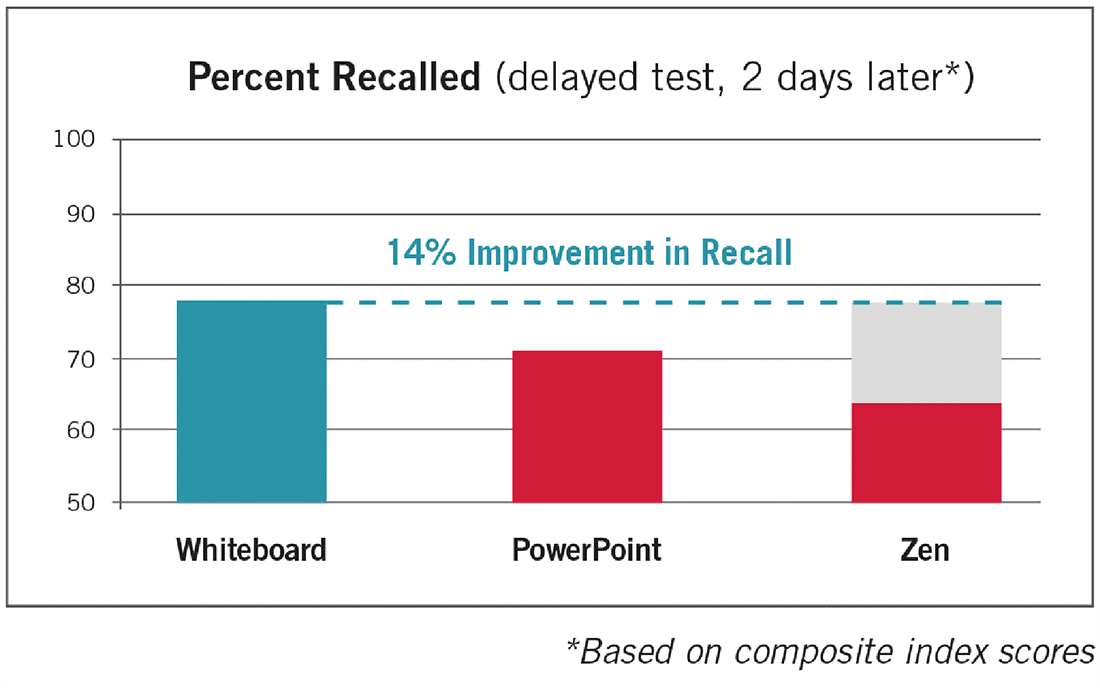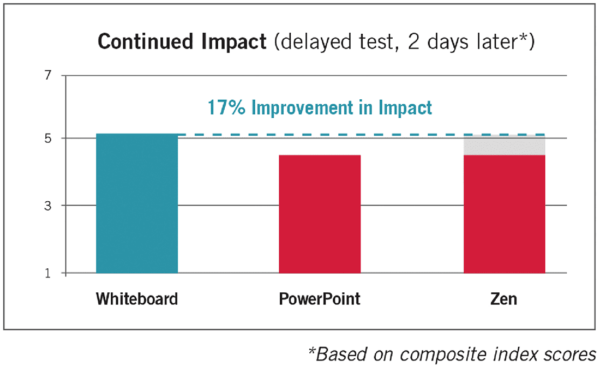To add “friction” or not to add friction – that is the question.
31st August 2018 | Tim Riesterer

Here we preview original research on how best to engage your audience during virtual meetings.
The move at many companies is to expand inside sales teams and decrease the number of “feet on the street”. But, for all the potential cost savings and productivity gains, this transition creates some serious engagement questions and challenges resulting from the virtual barrier between seller and buyer.
For inside sales reps, engaging prospects and customers by phone or online environments – instead of face-to-face – is a foundational part of the selling experience. Increasingly, the same can be said for field reps who are spending more time on virtual sales calls than on in-person meetings. This begs a couple of questions when it comes to delivering great customer conversations: Do you simply modify existing engagement techniques to a phone or web conference environment – or do these environments demand a major change in terms of how you deliver the message?
The aim is to determine the most effective approach for engaging prospects and customers in virtual environments.
There are a few schools of thought when it comes to engaging prospects and customers in a virtual environment. At a basic level, they include:
- Verbal-only – Try to “reduce friction” by keeping the conversation verbal only and not directing prospects and customers to web links, apps, or other visual storytelling aids for fear of disrupting or reducing their willingness to participate.
- Web Link with PowerPoint – Ask prospects and customers to go to a web link to show them some form of PowerPoint presentation deck or screen share demonstration to help tell your story.
- Dynamic visual storytelling – Use interactive visual storytelling over the phone, either “hand drawing” simple concrete images using a whiteboard app or dynamic visual builds in your presentation.
- Active customer participation – Asking prospects and customers to hand-draw certain concepts that help illustrate your core message and value proposition to move them from passive observer to active participant.
There is little to no research to help determine the best approach. But, there are a lot of opinions. That’s why we are currently putting these approaches to the test in a research simulation, done in partnership with the International Journal of Sales Transformation and Dr Nick Lee, Professor of Marketing at the Warwick Business School. The aim is to determine the most effective approach for engaging prospects and customers in virtual environments. (I outline the specific test conditions later in this piece, and the results will be published in the next edition of the Journal).

What face-to-face skills still translate?
For years, my company has taught tens of thousands of sales reps how to sharpen their skills for face-to-face meetings. As industries move to inside selling and more reps find themselves interacting with prospects and customers in phone or web-based environments, the question undoubtedly becomes: what communication concepts still apply when we are on the phone? What techniques translate to an inside selling context? How do you guarantee that the most effective elements of great face-to-face meetings carry over?
Environments aside, when it comes to great sales meetings, reps are striving for the same things they always have been. It’s about being remarkable, memorable, credible and compelling. So, how do you get your meetings to embody all that greatness on the phone or over the web?
Picture Superiority Effect
One way is through visual storytelling, if past research is any clue. Visuals are essential for helping you capitalize on a key research-backed principle known as the Picture Superiority Effect.
This affirms something many of us probably already know from experience – that is, that pictures are way more effective than text or words alone at getting people to remember what you’re telling them. In fact, in terms of recall engagement, a visually rendered story far outperforms one told with words or text alone – perhaps by a factor of six or seven, according to some studies.
That might not be the biggest surprise. But, given how pervasive PowerPoint presentations are in sales meetings, a question I kept wondering about was what type of visuals have the most positive effect on the things that matter most in a customer conversation, such as recall, engagement, credibility, quality, and maybe most importantly, persuasive impact.
Pictures are way more effective than text or words alone at getting people to remember what you’re telling them.
Online visual study
A few years ago, my company contracted with Dr Zakary Tormala, an expert in messaging and persuasion (and a social psychologist at the Stanford Graduate School of Business) to put that question to the test. We developed a simulation that involved 351 participants in an online experiment in which they were randomly assigned to one of three different presentation conditions – all covering the same concept through different modes of visual storytelling.
The three different visual presentations types included a:
- Whiteboard condition – This approach featured graphics that appeared to be hand-drawn, dynamically assembling on the screen as the voiceover told the story.
- PowerPoint condition – This condition featured a traditional PowerPoint presentation containing a relevant stock photo image and corresponding bullet points for the main points contained in the voiceover.
- “Zen” presentation condition – This presentation used a popular visual storytelling technique, featuring a large photographic image covering the entire page with just a few key words summarizing the main point of the story.
To be clear, all participants received the exact same audio information. Only the visual changed between the test conditions.
What the study revealed is that the whiteboard presentation format outperformed the two PowerPoint presentations across a wide range of metrics that included:
- Recall (we asked them to re-tell the story at the conclusion of the presentation and measured completeness and accuracy of their responses).
- Engagement Levels (participants found the presentation more interesting and thought-provoking).
- Presentation quality (clearer and more compelling).
- Perceived credibility (more trustworthy and reflecting higher expertise).
- Persuasion (more likely to change as a result of what they heard).
When it comes to inside sales, whether it’s appointment-setting or actual transacting, there are some who believe adding friction to the conversation is perilous.
Recall over time
Now, recall in the immediate aftermath of a presentation is one thing. But what about recall days after you’ve had your meeting? That’s a different standard – and maybe a more telling one as far as gauging how remarkable, memorable and compelling a presentation was.
To test this, we conducted a second round of the study a few weeks later with 401 new participants, all run through the same experiment. This time, to determine whether the whiteboard recall advantage held up over time, we had participants respond to a follow-up survey two days after the initial test.
Participants had to rely solely on their memories to respond to a series of questions about the presentations. Specifically, we assessed recall and, even more importantly, whether people had actually made changes in the past two days based on what they had seen in the presentation.
The follow-up survey revealed a significant boost in recall among participants who had experienced the presentation in the whiteboard condition versus the PowerPoint presentations. On average, two days after the initial viewing, the whiteboard presentation outperformed the other presentations (which did not differ from each other in performance) by 14 percent in recall (Figure 1) and 17 percent in impact (Figure 2) and engagement leading to change.

Figure 1: White board presentation was 14% better recalled.

Figure 2: Whiteboard presentation was 17% more impactful.
What this study shows is that simple, concrete visuals are more effective than PowerPoint with stock photography or large metaphorical imagery at generating the outcomes you want from a sales presentation – both when you’re in the meeting engaging with prospects and customers and well after the meeting has wrapped up.
Since the study was conducted online, virtually, we extrapolated that these results can and should be applied to the visuals you use in an online sales call. We also believe that simple, concrete visuals are highly effective in live, face-to-face sales meetings, both while you’re in the room and after you’ve left it.
What about adding too much friction?
But, when it comes to inside sales, whether it’s appointment-setting or actual transacting, there are some who believe adding friction to the conversation is perilous – meaning, asking the prospect to open a web link or draw a visual could reduce or interfere with your audience’s willingness to participate.
Given that inside sales is driven by phone calls where people are at risk of multi-tasking and otherwise have very short attention spans, it’s easy to see how common thinking has hardened around the idea that meetings should be streamlined – quick, clean and friction-free.
But here’s the problem: to date, there’s no research that settles whether subtracting friction from calls is more effective than other approaches at generating the outcomes you’re looking for. As a result, the supposed virtue of keeping virtual meetings “friction-free” may just be sales folklore – a well-intentioned idea that may or may not be valid. When viewed alongside our initial compelling research about the power of simple, concrete imagery, it seems the topic demands a closer look, especially for companies looking to gain an edge in their inside selling organizations.
The new visual story research project
The next phase of research seeks to determine whether inside sellers can and should go beyond the phone call and static PowerPoint to potentially more compelling forms of prospect and customer engagement.
At issue are the following questions: Should sellers employ visuals or keep it verbal? What kind of engagement strategy drives the most persuasive intent? Should there be less drawing or more drawing? If more, who should do the bulk of it – the seller or the prospect? What is the role of PowerPoint, and what kind of visual storytelling strategy needs to be incorporated into PowerPoint to make them most impactful?
Given the rise of inside sales, these questions are crucially important to gaining a competitive edge and figuring out how to most positively affect selling performance in these environments.
The research simulation, developed in collaboration with Dr Nick Lee at Warwick Business School in Coventry, UK, will test the following sales call conditions:
- Voice only
- Voice while watching a simple visual dynamically assembled in PowerPoint
- Voice while asking the participant to draw the visual themselves as the seller speaks
- Voice, while asking the audience to pre-draw some of the visual, then follow along and complete the rest
- Voice and PowerPoint visual, while also asking participant to draw and notate
These conditions will be assessed with an eye towards better understanding recall and persuasion, along with perceptions of uniqueness, innovation, engagement level, and urgency. What approach has the most persuasive intent? Is the reflex to reduce friction legitimate or just a red herring? It’s time to settle these questions with research. Stay tuned.
The results of the study will be covered in depth in the next issue of this publication, complete with full analysis to help you apply the findings to your selling activities.
1
Shelley Chaiken, “Heuristic Versus Systematic Information Processing and the Use of Source Versus Message Cues in Persuasion”, Journal of Personality and Social Psychology, 1980, Vol 39, No 5, 752-766.
The case-study that inspired the academic study
Here’s the story of how this research idea incubated.
A company that sells a $10,000 coaching product to marketing and sales leaders relies strictly on inside salespeople to drive business and close leads – and to do so in one call. Salespeople have a verbal script that includes a six-pronged persuasion technique following Robert Cialdini’s research (the Six Principles of Persuasion from his book Influence).
The company was adamant about not using any visuals conveyed through drawings or web links, believing it would create ”too much friction” that would negatively affect the call. My company, Corporate Visions, worked with them to develop a simple, concrete visual story modeled on our “Why change?” storytelling framework, which tested for creating urgency and convincing prospects to break from the status quo. (For more on the “Why change?” story see “Have you thought about this?” in the International Journal of Sales Transformation 1.2, July 2015, pp 38-39 and also “Disrupt or defend?” in issue 3.1, February 2017, pp 33-38 – Ed.)
Not only did we ask them to share the visual, we asked them to have the prospect draw the visual themselves during the conversation, adding maximum “friction” potential to the conversation.
We also employed other behavioural research, which showed that increasing the processing required by your audience can often increase engagement in a way that improves persuasion (Chaiken, S (1980) Heuristic Versus Systematic Information Processing and the Use of Source Versus Message Cues in Persuasion).
It turns out that the new visual story requiring the prospect to draw had an immediate positive impact relative to their previous verbal-only approach, increasing their sales by more than 24% the very next month.
While a very promising single example, we now want to test the approach in a more rigorous research simulation to generate more empirical data and to see how it holds up across different B2B selling scenarios.
The next issue of this publication will feature the study and its results. Stay tuned.


